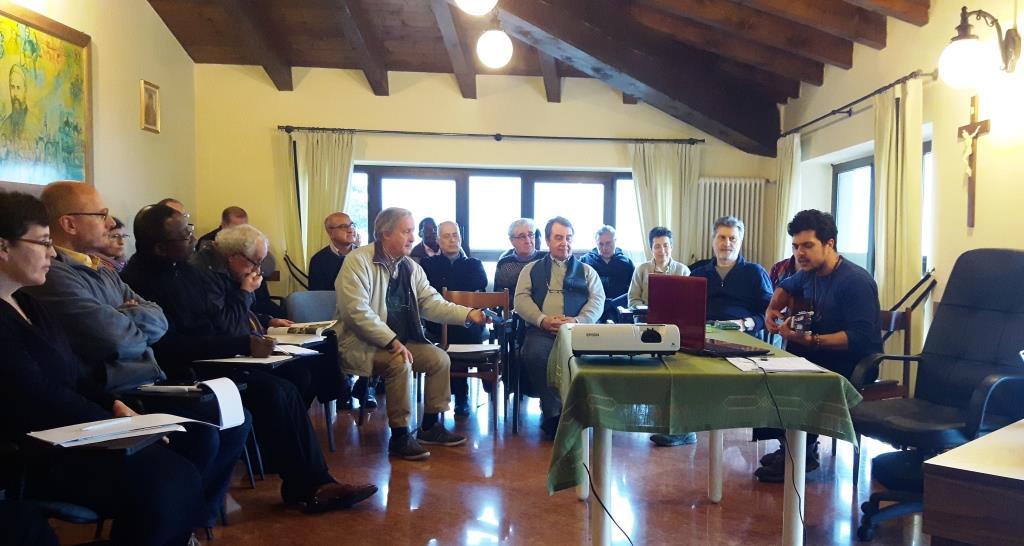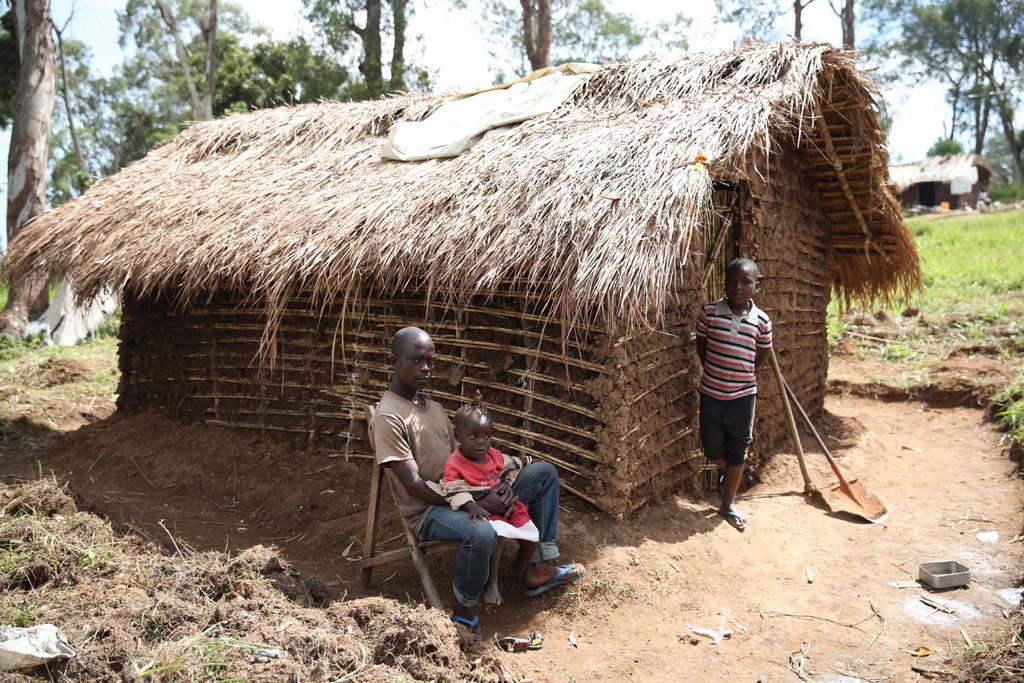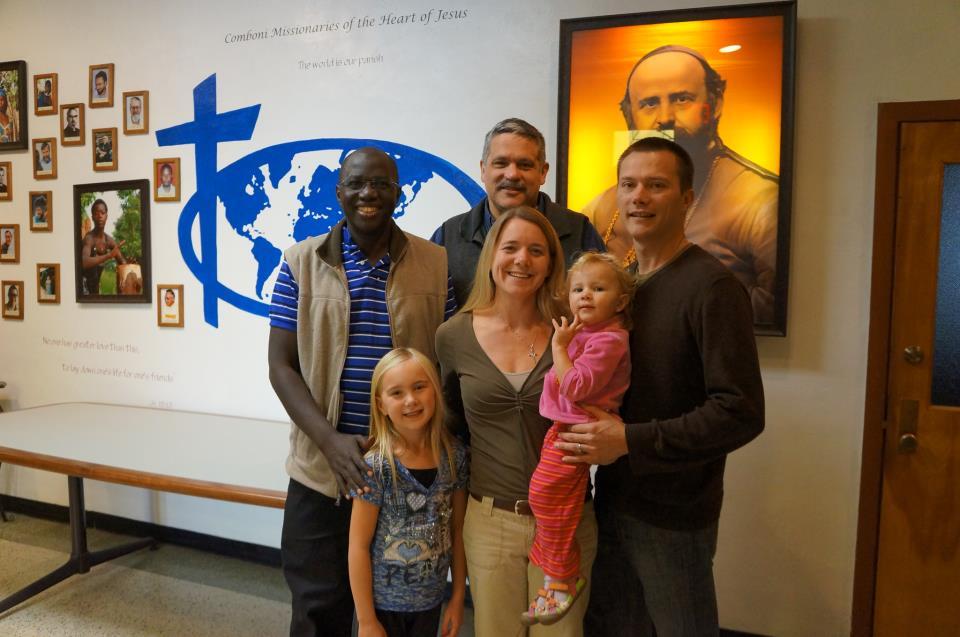Daniel Comboni
Misjonarze Kombonianie
Obszar instytucjonalny
Inne linki
Newsletter
Saturday, February 20, 2021
He was born in 1899 in a small village in the region of Brescia, Northern Italy. Feeling the Lord was calling him to the mission, he insistently asked to join the Comboni Missionaries. He entered the novitiate in Venegono Superiore in 1925, making his first profession as a religious in 1928.
During these first years of formation, he immediately showed himself to be gifted in many ways from cheese-making to cooking. His jovial character made him liked by all. Soon, the superiors saw in him the rough material to become a builder. They encouraged him to study. Brother Laffranchi became a Master Constructor in 1930.
In the meantime, he had worked at the erection of the South East wing of the novitiate, whose tower is still admired by many. He also experimented in new techniques. In 1928, while in Riccione to remodel the house, Brother Pietro decided to cast one floor slab in cement, a relatively new technology, and absolutely the first of its kind in town. Once the scaffolding was removed, the local contractors who came to examine the works refused to walk on the perilous slab. Later the brother used to describe their disbelief when they realised that the slab would not collapse.
But it was in the Sudan that Brother Laffranchi showed his genius for work. Asked to think about a cathedral for Khartoum, Brother Pietro set to work. The Vicar Apostolic, Bishop Bini, was sceptical of the possibility of building the cathedral as envisioned by the brother. No one in Khartoum had ever heard of reinforced concrete. Complex machinery was not available; much less could one find the expert workers required among the local people. To add to that, the colonial government ran an overly bureaucratic system, characterised by pedantic controls, and outdated in its understanding of construction.
Yet, Brother Laffranchi did not give up. Showing inventive ingenuity, he distributed responsibility, organised the local workers in teams, foresaw the most important difficulties and prepared a plan of action. By December 3, 1933 the cathedral was completed. During the day, Brother Pietro was busy following the work. The Arabic words he used most were ‘gawam’, quick! when he wanted to encourage the workers; and ‘kuayyis’, well done, in moments of encouragement and praise. At night, endless calculations for the reinforced concrete kept the Brother awake. Mr Watson, in charge of the Technical Office of Khartoum, testified that he never found a single error in the calculations. He was extremely impressed by the way the bell tower was designed and built.
Once the main body of the church was in place, Brother Pietro started working on the tower. He prepared his workers for a new technique: to build the tower without scaffolding. Every day, the tower grew a bit while the masons employed in the construction were barely visible from outside. The elegant structure, fashioned after the famous tower of St. Mark’s basilica in Venice, was soon finished.
After this major project, Brother Laffranchi undertook many other buildings throughout Northern Sudan. Comboni College, Khartoum, is still the most impressive of them all.
Brother Laffranchi embodied at least one of the ideas of Comboni concerning the brothers: he was a great promoter of his own workers. Scores of simple people became specialised masons after staying with him and learning new techniques. Brother Pietro used to divide his workers into teams. To each, he assigned specific tasks, explaining how to go about the work and supervising the progress. Some of his team leaders went on to become renowned master builders on their own account.
Another trait of this generous brother was his passion for innovation. The way he envisioned and built the cathedral of Khartoum caught the attention of many engineers. Later in life, while building the imposing seminary of the Catholic Exarchate of Ethiopic Rite in Asmara, he designed a new light sort of scaffolding to build the four arches and the huge dome. That structure was studied by architects of foreign building companies present in Asmara and received much attention in specialised literature in the English-speaking world.
Ill with leukaemia, Brother Laffranchi was ordered to go back to Italy. He managed a stopover in Khartoum on the 8th December, 1959. There he succeeded in postponing his final trip to Italy and asked to be given the chance of restoring some of the mission buildings. Restoration of the cathedral was followed by a score of other jobs all around Northern Sudan. Then came the time for building the cathedral of El Obeid. Brother Laffranchi was able to supervise about half of it. His leukaemia was worsening and he was brought to Khartoum to be taken to Italy. He died in Khartoum on the 13th of June, 1961. Even these last two years of his life were full of teaching for the other missionaries. Once again, Brother Pietro had succeeded in doing what he liked most: spreading the Good News.
[Comboni Missionaries]




